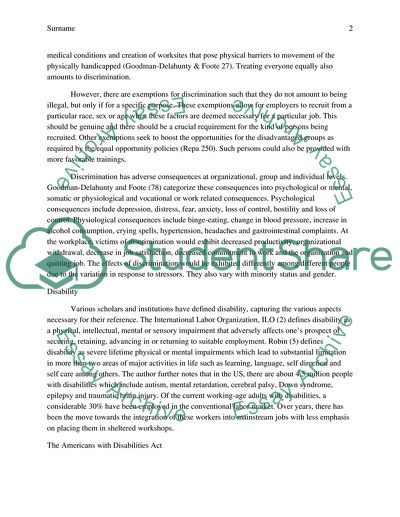Cite this document
(Disability in the Workplace Research Paper Example | Topics and Well Written Essays - 2000 words, n.d.)
Disability in the Workplace Research Paper Example | Topics and Well Written Essays - 2000 words. Retrieved from https://studentshare.org/human-resources/1605002-disability-in-the-workplace
Disability in the Workplace Research Paper Example | Topics and Well Written Essays - 2000 words. Retrieved from https://studentshare.org/human-resources/1605002-disability-in-the-workplace
(Disability in the Workplace Research Paper Example | Topics and Well Written Essays - 2000 Words)
Disability in the Workplace Research Paper Example | Topics and Well Written Essays - 2000 Words. https://studentshare.org/human-resources/1605002-disability-in-the-workplace.
Disability in the Workplace Research Paper Example | Topics and Well Written Essays - 2000 Words. https://studentshare.org/human-resources/1605002-disability-in-the-workplace.
“Disability in the Workplace Research Paper Example | Topics and Well Written Essays - 2000 Words”. https://studentshare.org/human-resources/1605002-disability-in-the-workplace.


